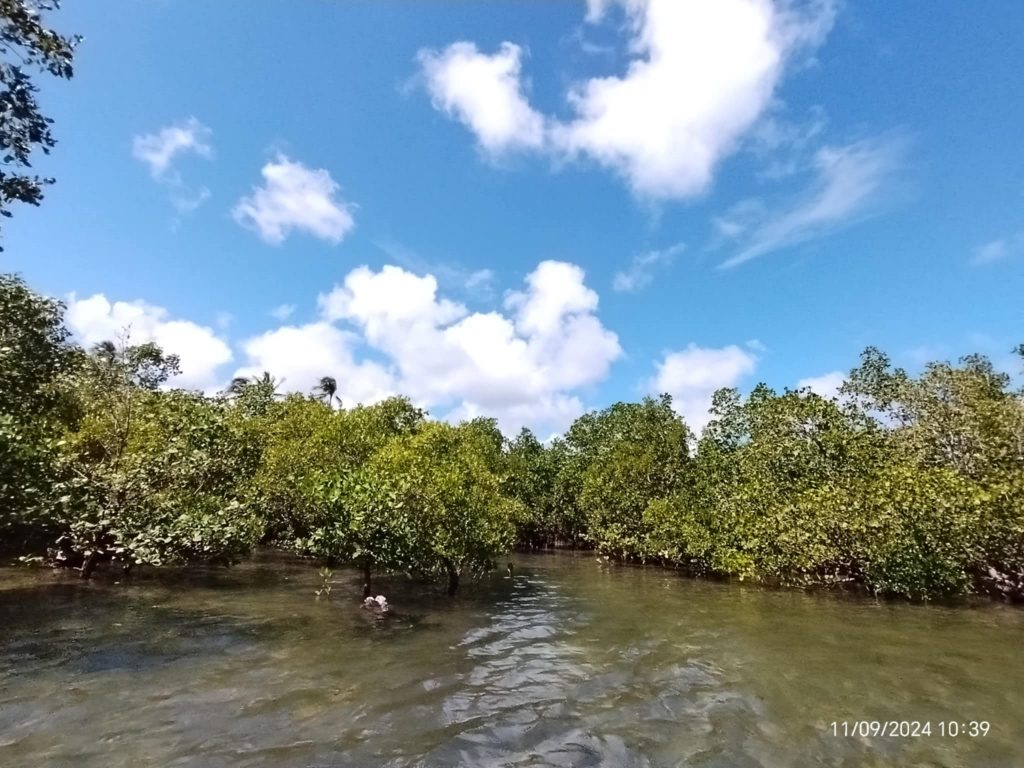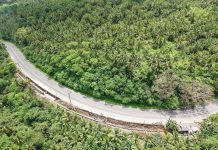Yolanda’s lesson

TACLOBAN CITY – In the small coastal village of Carmen, Hernani, Eastern Samar, residents learned a hard lesson about the importance of mangroves as natural barriers against flooding and storm surges.
Eleven years ago, when Super Typhoon Yolanda (international name: Haiyan) struck Eastern Visayas on November 8, 2013, it left unimaginable destruction in its wake. Homes and infrastructure were reduced to rubble, and lives were tragically lost.
Hernani was among the hardest-hit areas, with 78 lives lost—22 of whom were from the village of Carmen, including six children.
Marcelina Candido, 66, a village councilor in Carmen, recalled how mangroves along their shores had been undervalued.
“Many of our residents knew that mangroves could act as a natural barrier against storm surges, but they were often cut down for firewood, and children would sometimes uproot them for play. By the time Yolanda hit, only a few mangroves were still standing,” Candido said.
In the aftermath of the typhoon, efforts were made to replant mangroves. A year after the devastation, villagers were encouraged to restore their mangroves using propagules provided by the local government, the Department of Environment and Natural Resources (DENR), and various non-governmental organizations.
“People in the village now understand the importance of mangroves,” Candido said. “They act as shields against storm surges and rising sea levels.”
Helen Cantay, another resident of Carmen, was among those who helped replant mangroves in 2014 and 2016. “I joined the effort because I realized that mangroves can protect us from storm surges. We have also noticed an increase in fish in the sea since the mangroves were restored, which has helped our fishermen,” she shared.
While Carmen residents rely on mangroves for coastal defense, those in Tacloban City, considered the ground zero of Yolanda’s devastation, depend on a massive tide embankment for protection.
Clarita Villalino, barangay chairperson of Barangay 90 in San Jose district, welcomed the construction of the tide embankment. “While we haven’t faced another typhoon like Yolanda since its construction, it gives us some peace of mind. At the very least, it can help break the force of incoming water,” Villalino, 56, said.
Her barangay was one of the hardest hit, with 56 lives lost—over 10 of whom were never found. The storm surge reportedly reached up to 20 feet in their barangay.
The tide embankment, located 30 meters from the shoreline, began construction during the administration of President Benigno Aquino III and has continued through the leadership of Presidents Rodrigo Duterte and Ferdinand Marcos, Jr.
According to the regional office of the Department of Public Works and Highways (DPWH), the project was 63.97% complete as of October this year.
The P12.17-billion project spans 43.355 kilometers from Barangay Diit in Tacloban through Palo and Tanauan, Leyte, aiming to protect communities from storm surges—the primary cause of over 2,200 deaths in Tacloban during Yolanda.
DPWH Regional Director Engr. Edgar Tabacon expressed hope that the project would be completed during President Marcos’s administration.
Since its inception in 2016, the national government has allocated over P9 billion. The embankment, also known as the “Great Wall of Leyte,” features reinforced concrete slope protection on a steel sheet pile foundation, with bike lanes, railings, ramps, street lights, box culverts with stainless steel flap gates, and river gates with actuators.
Tacloban’s city government, as part of its disaster response measures, has also established three permanent evacuation centers in addition to 123 identified centers, which include schools, barangay halls, and even churches.
Rizalyn Ariza, an administrative officer of the City Disaster Risk Reduction and Management Office, explained that the permanent centers, located in Barangays Abucay and Cabalawan, aim to reduce the reliance on schools during disasters to prevent disruptions to classes.
“We only use schools as evacuation centers when our permanent ones are full. In total, these centers can accommodate about 5,000 people,” Ariza said.
She also emphasized the city’s efforts to enhance disaster preparedness through regular drills and community awareness initiatives.
Tacloban City Mayor Alfred Romualdez highlighted ongoing flood control projects designed to drain excess water into the sea during typhoons and heavy rains.
“Typhoons now bring massive volumes of water, leading to severe flooding. But we are learning and adapting,” Romualdez said, adding, “Of course, we should never forget the power of prayer. The prayers of many helped us endure Yolanda.”
And among the highlights for the 11th year anniversary of Yolanda, considered the strongest typhoon to hit inland, is candle lighting in all streets in the city, to remember those who perished to the disaster.
(JOEY A. GABIETA)



